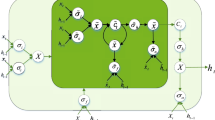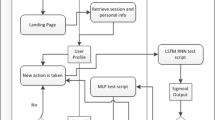Abstract
During the last decade, an increasing number of supermarkets have begun to use RFID technology to track consumers' in-store movements to collect data on their shopping behavioral. Marketers hope that such new types of RFID data will improve the accuracy of the existing customer segmentation, and provide effective marketing positioning from the customer’s perspective. Therefore, this paper presents an integrated work on combining RFID data with traditional point of sales (POS) data, and proposes a sequential classification-based model to classify and identify consumers’ purchasing behavior. We chose an island area of the supermarket to perform the tracking experiment and collected customer behavioral data for two months. RFID data are used to extract behavior explanatory variables, such as residence time and wandering direction. For these customers, we extracted their purchasing historical data for the past three months from the POS system to define customer background and segmentation. Finally, this paper proposes a novel classification model based on sequence-to-sequence (Seq2seq) learning architecture. The encoder–decoder of Seq2seq uses an attention mechanism to pursue sequential inputs, with gating units in the encoder and decoder adjusting the output weights based on the input variables. The experimental results showed that the proposed model has a higher accuracy and area under curve value for customer classification and recognition compared with other benchmark models. Furthermore, the validity of behavioral description variables among heterogeneous customers was verified by adjusting the attention mechanism.



















Similar content being viewed by others
References
Alfian G, Syafrudin M, Rhee J et al (2020) In-store customer shopping behavior analysis by utilizing RFID-enabled shelf and multilayer perceptron model. In: IOP conference series: materials science and engineering. IOP Publishing, p 012022
Anitha P, Patil MM (2019) RFM model for customer purchase behavior using K-means algorithm. J King Saud Univ Comput Inf Sci
Bahdanau D, Cho KH, Bengio Y (2015) Neural machine translation by jointly learning to align and translate. In: 3rd international conference on learning representations, ICLR 2015
Chen X, Fang Y, Yang M, Nie F, Zhao Z, Huang JZ (2018) PurTreeClust: a clustering algorithm for customer segmentation from massive customer transaction data. In: IEEE transactions on knowledge and data engineering, vol 30, no 3, pp 559–572
Cho K et al (2014) Learning phrase representations using RNN encoder-decoder for statistical machine translation. EMNLP 2014
Chung J et al (2014) Empirical evaluation of gated recurrent neural networks on sequence modeling. NIPS 2014 workshop on deep learning, December 2014
Fawcett T (2006) An introduction to ROC analysis. Pattern Recognit Lett 27(8):861–874
Foxall GR (2015) Consumer behavior analysis comes of age. The Routledge companion to consumer behavior analysis. Routledge
Guadagni PM, Little JDC (1983) A logit model of brand choice calibrated on scanner data. Mark Sci 2(3):203–238
Gupta S (1988) Impact of sales promotions on when, what, and how much to buy. J Mark Res 25(4):342–355
Hamuro Y, Katoh N, Matsuda Y et al (1998) Mining pharmacy data helps to make profits. Data Min Knowl Disc 2:391–398
Hochreiter S, Schmidhuber J (1997) Long short-term memory. Neural Comput 9(8):1735–1780
Hui SK, Bradlow ET, Fader PS (2009a) Testing behavioral hypotheses using an integrated model of grocery store shopping path and purchase behavior. J Consum Res 36(3):478–493
Hui SK, Fader PS, Bradlow ET (2009b) The traveling salesman goes shopping: The systematic deviations of grocery paths from TSP optimality. Mark Sci 28(3):566–572
Ip E et al (2002) A neural network application to identify high-value customers for a large retail store in Japan. Neural networks in business: techniques and applications. IGI Global, pp 55–69
Kaefer F, Heilman CM, Ramenofsky SD (2005) A neural network application to consumer classification to improve the timing of direct marketing activities. Comput Oper Res 32(10):2595–2615
Kaneko Y, Miyazaki S, Yada K (2017) The influence of customer movement between sales areas on sales amount: a dynamic bayesian model of the in-store customer movement and sales relationship. Procedia Comput Sci 112:1845–1854
Kholod M, Takai K, Yada K (2011) Clockwise and anti-clockwise directions of customer orientation in a supermarket: evidence from RFID data. In: International conference on knowledge-based and intelligent information and engineering systems. Springer, Berlin, pp 304–309
Kim E, Kim W, Lee Y (2003) Combination of multiple classifiers for the customer’s purchase behavior prediction. Decis Support Syst 34(2):167–175
Kingma DP, Ba J (2015) Adam: a method for stochastic optimization. ICLR (Poster)
Larson JS, Bradlow ET, Fader PS (2005) An exploratory look at supermarket shopping paths. Int J Res Mark 22(4):395–414
Lombardi S, Gorgoglione M, Panniello U (2013) The effect of context on misclassification costs in e-commerce applications. Expert Syst Appl 40(13):5219–5227
Luong M-T, Pham H, Christopher D (2015) Manning. Effective approaches to attention-based neural machine translation. In: Proceedings of the 2015 conference on empirical methods in natural language processing. EMNLP 2015, pp 1412–1421
Migda-Najman K, Najman K, Badowska S (2020) The GNG neural network in analyzing consumer behaviour patterns: empirical research on a purchasing behaviour processes realized by the elderly consumers. Adv Data Anal Classif 14(4):947–982
Mohammed MM, Mohamed NA, Adam AA et al (2020) Current directions and future research priorities of customer data analysis. J Inf Syst Inform 2(2):300–311
Nacif RC (2012) Online customer loyalty: forecasting the repatronage behavior of online retail customers. Springer, New York
Nakahara T, Yada K (2012) Analyzing consumers’ shopping behavior using RFID data and pattern mining. Adv Data Anal Classif 6(4):355–365
Peker S, Kocyigit A, Eren PE (2017a) A hybrid approach for predicting customers’ individual purchase behavior. Kybernetes 46(10):1614–1631
Peker S, Kocyigit A, Eren PE (2017b) LRFMP model for customer segmentation in the grocery retail industry: a case study. Mark Intell Plan 35(4):544–559
Sano N, Yada K (2015) The influence of sales areas and bargain sales on customer behavior in a grocery store. Neural Comput Appl 26(2):355–361
Sato T, Takano Y, Nakahara T (2019) Investigating consumers’ store-choice behavior via hierarchical variable selection. Adv Data Anal Classif 13(3):621–639
Sorensen H (2003) The science of shopping. Mark Res 15(3):30–30
Srivastava N, Hinton G, Krizhevsky A et al (2014) Dropout: a simple way to prevent neural networks from overfitting. J Mach Learn Res 15(1):1929–1958
Sutskever I, Vinyals O, Le QV (2014) Sequence to sequence learning with neural networks. In: Advances in neural information processing systems, pp 3104–3112
Takai K, Yada K (2013) A framework for analysis of the effect of time on shopping behavior. J Intell Inf Syst 41(1):91–107
Wang Z, Zuo Y, Li T et al (2019) Analysis of customer segmentation based on broad learning system. In: 2019 international conference on security, pattern analysis, and cybernetics (SPAC). IEEE pp: 75–80
Yada K (2011) String analysis technique for shopping path in a supermarket. J Intell Inf Syst 36(3):385–402
Yu Q, Wang K, Strandhagen JO et al (2017) Application of long short-term memory neural network to sales forecasting in retail: a case study. In: International workshop of advanced manufacturing and automation. Springer, Singapore, pp 11–17
Zuo Y (2016) Prediction of consumer purchase behaviour using Bayesian network: an operational improvement and new results based on RFID data. Int J Knowl Eng Soft Data Paradig 5(2):85
Zuo Y, Ali ABMS, Yada K (2014) Consumer purchasing behavior extraction using statistical learning theory. Procedia Comput Sci 35:1464–1473
Zuo Y, Yada K, Kita E (2015) A Bayesian network approach for predicting purchase behavior via direct observation of in-store behavior. In: Suzuki J, Ueno M (eds) Advanced methodologies for Bayesian networks. AMBN 2015. Lecture notes in computer science, vol 9505. Springer, Cham, pp 61–75
Acknowledgements
Funding was provided by National Natural Science Foundation of China (Grant No. 52131101), LiaoNing Revitalization Talents Program (Grant No. XLYC1807046), Natural Science Foundation of Liaoning Province (Grant No. 2020-HYLH-26), and Science and Technology Fund for Distinguished Young Scholars of Dalian (Grant No. 2021RJ08).
Author information
Authors and Affiliations
Corresponding author
Ethics declarations
Conflict of interest
The authors declare that there are no conflicts of interests regarding the publication of this paper.
Additional information
Publisher's Note
Springer Nature remains neutral with regard to jurisdictional claims in published maps and institutional affiliations.
Rights and permissions
Springer Nature or its licensor holds exclusive rights to this article under a publishing agreement with the author(s) or other rightsholder(s); author self-archiving of the accepted manuscript version of this article is solely governed by the terms of such publishing agreement and applicable law.
About this article
Cite this article
Zhao, L., Zuo, Y. & Yada, K. Sequential classification of customer behavior based on sequence-to-sequence learning with gated-attention neural networks. Adv Data Anal Classif 17, 549–581 (2023). https://doi.org/10.1007/s11634-022-00517-3
Received:
Revised:
Accepted:
Published:
Issue Date:
DOI: https://doi.org/10.1007/s11634-022-00517-3




